Car Sales
Fiat Happenings

Scattered around Australia are numerous Fiat outlets with showroom teams that are willing to buy, sell and service any of their special brand of car. You’ll find a Fiat showroom in Perth, Adelaide, Melbourne, Canberra, Sydney, Wollongong, Brisbane and on the Sunshine Coast. There are even more places around Australia who are experts in servicing or accessing parts for your Fiat or Fiat Abarth vehicles. This leaves you very little need to hold off being the proud owner of a new or used Italian legend should you so desire.
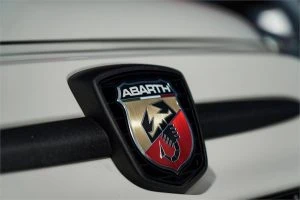
New 2021/2022 Fiat vehicles offer a variety of small 4- and 5-seater cars that come as standard little hatchbacks or hatchbacks with a bit more Abarth pep and performance. The Abarth brand are the performance models that are special Fiat 500s with lots of fun and plenty of zip to make your drive both entertaining and unique. The standard Fiat 500 is a surprisingly roomy small car that is comfortable and efficient to drive.
Fiat also does a range of commercial vehicles that are mainly a variety of medium and large vans. These are popular vans for businesses because Fiat offer their range of modern, safe vans at a reasonable price, and the team are willing to back their vans up with a competitive servicing and warranty package for any of their new Fiat-commercial-model buyers. Fiat also offer the Ducato in a range of motorhome and camper styles.
Fiat really is a quintessential “Made in Italy” stamp with all its Italian history, style, constant innovation and decent quality being part of the modern range. The recent Fiat 500 has seen 80% of its sales outside of Italy, and it is a model that leads the city car segment in Europe together with its cute little sibling, the Fiat Panda.
Recently, the introduction of the Hybrid Fiat 500 and Panda has given an extra boost to the sales of both models. These are exceptionally economical cars. In Italy, the stylish Fiat 500X has been refreshed, ready to continue playing a leading role in many Italian family’s lives. Indeed, since its launch in 2014, the Fiat 500X has always led its segment in Italy, and the car regularly features in the European top 10 small-car segment.
Recent news from Fiat in Europe has seen some other new model launches, which would also be nice to see become available here in Australia – particularly for those of us who want to get the benefits of driving a small and efficient car with Italian style. The final months of last year saw the new Fiat 500, Tipo, Tipo Cross and Panda range, and so Fiat has brought 2021 around with the entire line-up of cars being completely refreshed.
A lot of effort has gone into providing new Fiats and Abarths with all the latest technology, safety, comfort and style for each new variant. New models also boast Euro 6D-Final-compliant engines across the entire range. The Connect trim level is directed at customers who want to stay connected at all times. Models with Connect come standard with the 7-inch Uconnect infotainment system with DAB radio, Apple CarPlay and Android Auto, the easy and efficient way to exploit the services of your device while travelling in your car.
Standard features of the 2021 Fiat 500 also includes cruise control, a sports steering wheel with built-in controls, 15-inch alloy wheels and fog lights. You can also select the dedicated new Perbene Grey/Vesuvius Black two-tone insignia. The 2021/2022 Fiat 500X comes with black seats, a techno-leather steering wheel, 16-inch alloy wheels, blacked-out windows, fog lights, LED DRLs, parking sensors, along with dusk sensors and rain sensors.
Here is a picture of the stunning little Abarth F595. Check out the gorgeous body kit and quad exhausts!
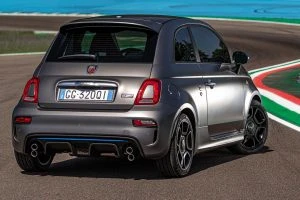
Abarth F595
New EV SUVs
We still seem to be desiring the SUV over other shapes and styles of car. This is for reasons that I can understand; things like safety, space and ride comfort tend to be found in spades when you travel inside a decent-size SUV. Because we are likely to go through a period of history where the EV may well rule the road, are there any SUV-type EVs available now? EVs aren’t selling like hot cakes just yet, but there some EV SUVs bigger than a pint-sized Honda E that you might be interested in. It turns out that, actually, there are some pretty decent EV SUVs available to the buyer loaded with cash. As yet, they aren’t the cheapest vehicles on the planet, particularly if they are of the premium luxury brands, but it’s nice to know that if you did have the money, and wanted a spacious and desirable luxury model, they are already being sold out on the market.
Tesla has the jump on its competition, and they already have a decent wodge of EV clients under their wings. Because it was pretty much the first EV manufacturer to design and build a decent EV, it was Tesla who soaked up the early adopters of Tesla’s EV technology, and it was these buyers who were very keen to align and embrace the new EV technology early on. What is happening now, is that because other manufacturers are only now getting fully into the swing of EV technology, the keenest buyers have already been wooed and taken by Tesla, so, for instance, if you are an Audi e-tron or Jaguar I-Pace, you have a slightly harder job of getting your buyers because you have to actually entice them away from their luxury ICE vehicles and into one of their EV variants.
Tesla Model X
Let’s first give credit where credit is due, and let’s talk about the Tesla Model X EV SUV. The Model X can come with an optional six seats, the middle row boasting full-on Captain’s chairs. The five-seat Model X is the standard guise. I love the falcon-wing doors; they look so cool and make life very easy getting in and out of the car – even in tight parking spaces with as little as 11-inches on either side. Tesla’s Model X cabin is nice, big, and comfortable. Up the front, there is a big infotainment display screen on the dash. This is as big and as good as it gets in any car. The roof/ceiling is also a huge display screen, which is tinted so that the glare from the sun is minimised. The Tesla feels extremely modern but also, at the same time, quite a simple car that is fun to live with. It has funny features like a Fart Mode, which is an emissions testing mode that allows the car to perform fart sequencing and farting whenever it requires to do so. People outside don’t escape the sounds either. This feature does leave one in hysterics – you have been warned! The Tesla Model X is very different to anything else on the road, and that makes it a unique drive. Out on the road, the Tesla Model X is quick, and its ride does a pretty good job of soaking up the bumps. There are better handling cars like the Audi e-tron and Jaguar I-Pace, however.
- Twin electric motors
- 100kWh battery
- Weight: 2459 kg
- Range: Claimed at over 500 km, real world driving more likely to be around 300 km.
- 310 kW of power
- 660 Nm of torque
- Top speed: 250 km/h
- 0-100 km/h: 4.9 seconds
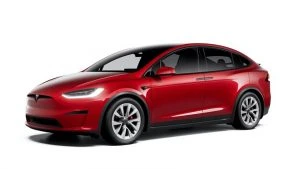
Tesla Model X
Audi e-tron
Audi’s new e-tron has five seats, all rather comfortable and impeccably crafted. The touchscreen system is classy, right up-to-date, and detailed. You do have plenty of menus to work through before finally getting to where you want to be in the infotainment set-up. On the road, the Audi e-tron is exceptionally well-sorted. It feels really tight around the corners, smooth and very quiet. Though EVs are generally heavy vehicles, the e-tron disguises its mass very well, indeed. There is plenty of well thought-out storage compartments throughout the cabin, and on a day-to-day basis this is a nice EV SUV to live with.
- Twin electric motors
- 95kWh battery
- Weight: 2490 kg
- Range: Claimed at around 385 km, real world driving more likely to be around 300 km.
- 300 kW of power
- 664 Nm of torque
- Top speed: 200 km/h
- 0-100 km/h: 5.7 seconds

Audi e-tron
Volvo XC40
Volvo’s XC40 Pure Electric Hybrid is a smaller luxury EV SUV. Safety features include autonomous emergency braking, run-off-road assist and up to Level 2 self-driving in heavy traffic situations. It’s available with AWD and uses a nice silent, smooth electric set-up. The Volvo’s version of an EV SUV is a gem. The XC40 looks and feels very modern, and the XC40’s cabin is impressively spacious. Standard equipment levels are high and include a 12.3-inch digital instrument panel with configurable EV-specific displays, panoramic sunroof, heated front power seats, and inductive charging for your smartphone. Also standard, is the full suite of Volvo safety features, including lane keep assist, blind-spot and cross-traffic alert, and rear collision alert. The 460 litres of boot space opens up to 1336 litres with the rear seats folded down flat. These can be bought new for around $85k, making this a well-priced premium luxury EV SUV that is comfortable and swift.
- Twin electric motors
- 78kWh battery
- Weight: 2158 kg
- Range: Claimed at around 418 km, real world driving more likely to be around 300/350 km.
- 300 kW of power
- 659 Nm of torque
- Top speed: 180 km/h
- 0-100 km/h: 4.7 seconds
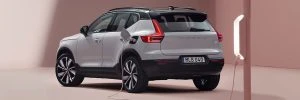
Volvo XC40 Recharge Electric
Jaguar I-Pace
In my opinion, the Jaguar I-Pace wins the EV SUV beauty contest. From every angle it looks nice, athletic, and the perfect blend of old and new design. Even with its GT lines there is a nice amount of space inside the EV Jag. To drive, the Jaguar I-Pace is wonderful. It feels very crisp through the corners and it even has a satisfying growl that flows through the speaker system as you plant your right foot and accelerate hard. Compared with its rivals, the new Jaguar I-Pace weighs in at a comparatively light 2.0 tonnes. This is a lovely EV SUV and is probably the one I’d prefer most of all the snobbish EV SUVs currently on sale.
- Twin electric motors
- 90kWh battery
- Weight: 2068 kg
- Range: Claimed at around 420 km, real world driving more likely to be around 300 km.
- 294 kW of power
- 695 Nm of torque
- Top speed: 200 km/h
- 0-100 km/h: 4.5 seconds
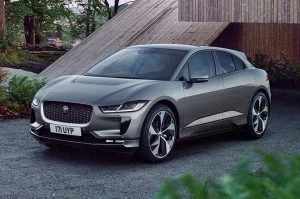
Jaguar I-Pace
BMW’s latest iX and Mercedes Benz’s EQC are some other luxury EV SUVs worth a look at. And then some other considerations that are substantially cheaper than the premium EV SUVs mentioned above would be the small Mercedes-Benz EQA and the very good MG ZS EV, Hyundai Kona and Kia Niro.
Some big reasons why you’d want to change to a EV SUV right now would be the driving smoothness, the driving silence, self-driving safety features, and the potential for saving money at the “pump”. I think it was Top Gear who recently suggested that, on average, the running costs of one of these were on a par with an equivalent petrol car capable of 73 mpg (3.2 litres/100 km). That’s if you were to do most of your charging at home and not at public charging stations.
When ADAS Features Fail

I don’t quite know why I’ve become more attentive to learning about a car’s ability to protect its occupants in the event of a collision, along with its ability to avoid the collision altogether in the first place. I expect it has a lot to do with having close family members who occasionally need to drive themselves places. Advanced Driver-Assistance Systems (ADAS) are growing in popularity. ADAS systems can help prevent accidents not only at speed, but also when parked as a stationary car. ADAS features are designed with one purpose in mind and that is to increase driver and occupant safety.
ADAS features include things like automatic emergency braking, blind spot detection, collision warning systems, cross-traffic alert, forward and rear collision warning, lane departure warning, lane keeping assist, park assist, pedestrian detection and avoidance systems, cyclist detection and avoidance systems, road sign recognition, active radar cruise control… and the list goes on. ADAS employs cameras and sensors to detect a potential collision or event and then proceed to activate systems of avoidance if necessary. These are important safety features which help prevent accidents.
Research on insurance claims that was carried out by LexisNexis Risk Solutions showed that vehicles involved in incidents that had ADAS on-board exhibited a 27% reduction in the frequency of claims made for bodily injury. The results also showed that vehicles that had ADAS on-board exhibited a 19% reduction in the frequency of claims made for property damage. Obviously, this would suggest that the systems must be doing some good.
A study by the Insurance Institute for Highway Safety (IIHS) revealed that the crash involvement rate for vehicles with blind-spot monitoring was 14% lower than for the same vehicle without the equipment. Researchers also stated that the study also suggested that if every vehicle sold in the US in 2015 was equipped with blind-spot monitoring, 50,000 crashes and 16,000 crash injuries might have been prevented.
At present, one of the big downsides of the ADAS features is that they are darn expensive. Not only do they put the price of a new car up, they also make the car costlier to insure because if any of the systems gets damaged the insurance and repair bills are usually eye-watering. Hopefully, ADAS features will come way down in price and become similar to standard computer software and technology which is, on the whole, a dime-a-dozen now.
The other thing is that I hope ADAS will function 100% of the time correctly as intended, because vehicles designed to be able to automatically brake for objects such as other cars, pedestrians, and cyclists, and to drive themselves inside highway lanes without driver input, is not an exact science. A slightly frightening example of my concern here is when Volvo was demonstrating its pedestrian AEB technology to journalists in 2016. Volvo used their V60 model in the demonstration, where it was travelling toward a dummy named Bob. The V60 didn’t detect Bob being in the way, and so Bob was hit in what was a controlled environment. An alert driver in the V60 may well have returned a better outcome.
Then shortly after, another Volvo V60 was demonstrating its collision detection and avoidance system where it was to avoid hitting a stationary truck. The failure to detect and avoid the collision can be seen here: https://www.youtube.com/watch?v=aNi17YLnZpg
Again, an alert and competent driver could well have resulted in a better outcome, should this have happened in the real world.
In 2018, the IIHS took five new vehicles and tested them. The Tesla Model 3, the Tesla Model S, the BMW 5 Series, the Mercedes E-Class and the Volvo S90 were the test vehicles. Each vehicle’s AEB, adaptive cruise control and lane-keeping assist systems were tested. Some of the problems IIHS encountered was that the AEB didn’t actually work in some vehicles in some circumstances.
In other tests, the IIHS observed: “The BMW 5-series steered toward or across the lane line regularly, requiring drivers to override the steering support to get it back on track. Sometimes the car disengaged steering assistance on its own. The car failed to stay in the lane on all 14 valid trials. The Model S was also errant in the hill tests.”
Sadly, just a couple of years ago an autonomous Uber fitted with even more sensors than any standard ADAS-equipped road car killed a pedestrian at night in the US. This happened while researchers and designers were conducting public testing. What this suggests is that the ADAS technology is amazing and good enough to be placed into new cars. However, it doesn’t mean ADAS will always work as intended, and it does point to the fact that drivers must still always be fully alert at the wheel. If the driver is not fully alert, the outcome from these system fails can sometimes be way worse than if the driver was fractionally slower to manually override the systems detection time and action times.
I’ve heard of numerous occasions when vehicles have falsely detected situations. A more common fail is when accident emergency braking (AEB) engaged on-board a car when it shouldn’t have, which meant that the AEB stopped the vehicle abruptly and unexpectedly on a clear road. At the time, traffic is still coming up behind the vehicle. Lane keep assist isn’t always that great either, and the results of a high-speed mishap on a main highway is tragic.
ANCAP is Australian’s big car-safety tester, and a recent representative suggested that AEB and lane-keeping assist technology, which is where the car will steer itself, was beginning to be put under the microscope. This would test for how accurate the system actually is, and if it would actually do the opposite and steer the vehicles into a dangerous situation. Testing ADAS features should take priority over just saying that the technology is available in the car at the time of crash testing, whereby the appropriate ADAS feature box is ticked and the job done.
ADAS mostly works for the better. It does raise obvious safety problems, particularly when manufacturers have all the pressure to pack in as many ADAS features into their vehicles as possible for as little cost as possible to remain competitive on the sales front. This pressure would suggest that these systems could be prone to potentially become unsafe.
With cars loaded with ADAS features, you could also say that drivers of these new vehicles might be tempted to hop on the mobile phone to check messages once they have activated the adaptive cruise control and lane-keep assist systems. Essentially, it becomes easier to break the law; which takes us back to the point that we shouldn’t rely heavily on ADAS technology because it can fail to work. We don’t often hear this preached at the car sales yard or on new-car adverts.
In Australia, features such as antilock brakes (ABS) and electronic stability control (ESC) are mandatory in new vehicles that are sold to the public. These mandatory requirements are set to be pushed to the next level, where automatic emergency braking (AEB), adaptive cruise control and lane-keeping assist would have to be on-board any new vehicle being sold to the public. Even alcohol detection devices may well be part of these standard requirements. Europe is set to introduce some of these requirements over the next few years, and Australia is likely to follow the lead. Newly imported European cars would end up with these features anyways, a win-win for us new-car buyers.
ADAS is good, but we still need to drive our cars.
Small Overlap Crash Test

The influx of all the amazing new electronic safety aids and crash avoidance systems found on-board new cars has been exceptional. There is no doubt that these systems are helping save lives and minimising injury. There has been one part of the latest car crash testing regime that the Insurance Institute for Highway Safety (IIHS) has brought in as part of their testing in order to help make cars safer.
The IIHS is an independent, non-profit scientific and educational organization dedicated to reducing deaths, injuries and property damage from motor vehicle crashes through their ongoing research and evaluation, and through the education of consumers, policymakers and safety professionals. The IIHS is funded by auto insurance companies and was established back in 1959. Its headquarters is in Arlington, Virginia, USA. A lot of what the IIHS does is crash test cars in a variety of ways to gather data, analyse the data, and observe the vehicles during and after the crash tests to quantify how safe each car is. The results and findings are published on their website at IIHS.org. Car manufacturers have been forced to take these tests seriously because, at the end of the day, these results matter and will affect car sales as the public become informed about how safe their cars will likely be in the event of an accident.
Since 2012, the IIHS has introduced a couple of new tests that they put the vehicles through to see how safe they are in an event of small overlap collision. The driver-side small overlap frontal test was brought about to help encourage further improvements in vehicle frontal crash protection. Keeping in mind that these IIHS tests are carried out using cars with left-hand-drive, the test is designed to replicate what happens when the front left corner of a vehicle collides with another vehicle or an object like a tree or utility pole. This crash test is a challenge for some safety belt and airbag designs because occupants move both forward and toward the side of the vehicle from the time of impact. In the driver-side small overlap frontal test, a vehicle travels at 40 mph (64 km/h) toward a 5-foot-tall rigid barrier. A Hybrid III dummy representing an average-size man is positioned in the driver seat. 25% percent of the total width of the vehicle strikes the barrier on the driver side.
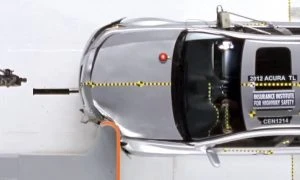
Most modern cars have safety cages encapsulating the occupant compartment and are built to withstand head-on collisions and moderate overlap frontal crashes with little deformation. At the same time, crush zones help manage crash energy to reduce forces on the occupant compartment. The main crush-zone structures are concentrated in the middle 50% of the front end. When a crash involves these structures, the occupant compartment is protected from intrusion, and front airbags and safety belts can effectively restrain and protect occupants.
However, the small overlap frontal crashes primarily affect a vehicle’s outer edges, which aren’t well protected by the crush-zone structures. Crash forces go directly into the front wheel, the suspension system and the firewall. It is not uncommon for the wheel to be forced rearward into the footwell, contributing to even more intrusion into the occupant compartment, which often results in serious leg and foot injuries. To provide effective protection in these small overlap crashes, the safety cage needs to resist crash forces that haven’t been amplified, concentrated on one area or aren’t tempered by crush-zone structures. Widening these front-end crash protection structures does help.
The IIHS also performs the passenger-side small overlap frontal test. The passenger-side test is the same as the driver-side test, except the vehicle overlaps the barrier on the right side. In addition, instead of just one Hybrid III dummy, there are two — one in the driver seat and one in the passenger seat.

Automotive manufacturers initially responded to these driver-side small overlap test results by improving vehicle structures and airbags, and most vehicles now earn good ratings. However, IIHS research tests demonstrated that those improvements didn’t always carry over to the passenger side. Discrepancies between the left and right sides of vehicles spurred the IIHS to develop a passenger-side small overlap test and begin issuing passenger-side ratings in 2017.
It is good that vehicle safety always seems to be on the improve and, with each new model, the new-car buyer can expect a safer vehicle. Thanks to crash testers like the IIHS, ANCAP and Euro NCAP, we are experiencing safer cars on our roads.